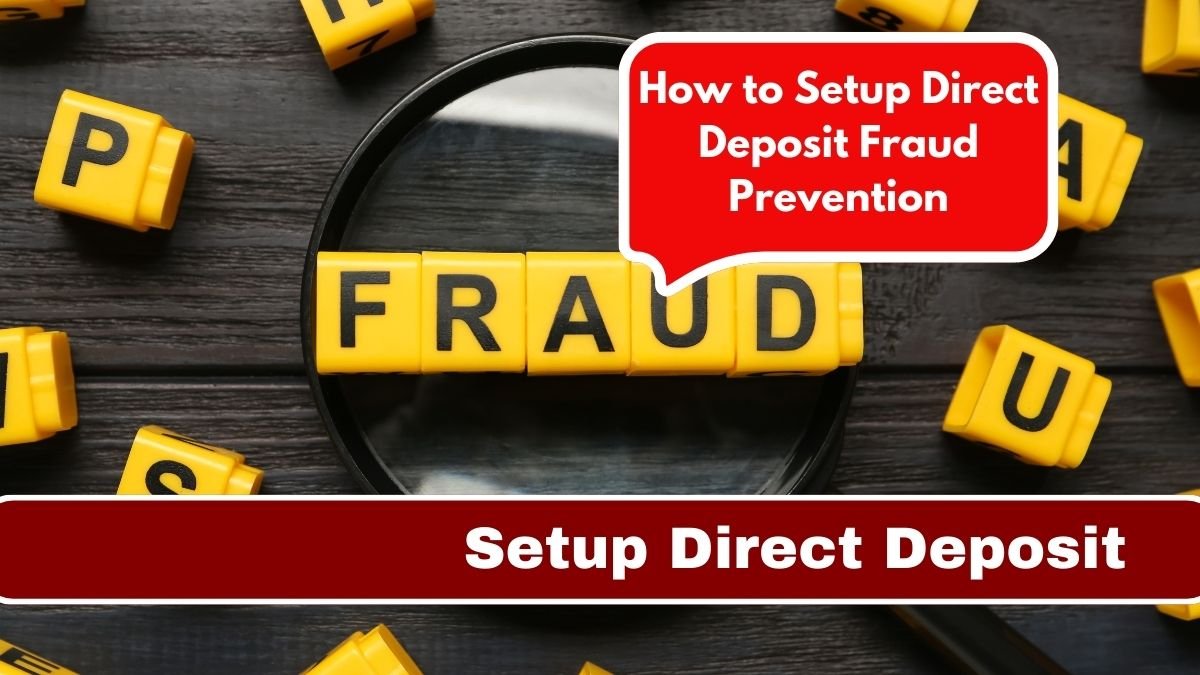Direct deposit is a fast, secure, and convenient way to receive your payments, whether it’s your paycheck, government benefits, or tax refunds. However, with the rise of digital transactions, the threat of fraud has become a significant concern. Setting up a direct deposit fraud prevention block can protect your financial information from unauthorized access and safeguard your money. In this article, we will walk you through the steps to set up this block and provide some tips on how to stay safe.
What is a Direct Deposit Fraud Prevention Block?
Before we dive into how to set it up, let’s first understand what a direct deposit fraud prevention block is. Simply put, it’s a security feature offered by many banks and financial institutions that prevents unauthorized or fraudulent direct deposits into your account. This block ensures that only the payments or deposits you authorize will be processed, making it much harder for fraudsters to steal your money.
Why Should You Set Up a Fraud Prevention Block?
Fraudulent activity can happen in many forms, from phishing scams to account takeovers. A fraud prevention block helps to stop criminals from hijacking your direct deposit payments, giving you peace of mind. Here’s why you should consider setting up this block:
- Protects Your Income: You don’t want someone else accessing your paycheck or benefits.
- Prevents Unauthorized Transactions: If your account is compromised, the block prevents criminals from making unauthorized deposits.
- Boosts Your Financial Security: A block adds an extra layer of protection, making it more difficult for fraudsters to gain access.
How to Set Up a Direct Deposit Fraud Prevention Block
Setting up a fraud prevention block on your direct deposit is usually straightforward and can be done by contacting your bank or financial institution. Here’s a simple step-by-step guide to help you get started:
Step One: Contact Your Bank
The first thing you need to do is contact your bank or financial institution. Most banks have a customer service number or an online chat feature where you can speak with a representative. Some banks also offer this service through their mobile apps or websites.
Step Two: Request the Block
Once you’re in touch with a customer service representative, ask them to set up a direct deposit fraud prevention block. Be prepared to provide some personal information to verify your identity, such as your account number, full name, and address.
Step Three: Confirm the Settings
After the fraud prevention block is set up, ask the representative to confirm that it has been activated. This will ensure that no unauthorized deposits will go through your account without your permission.
Step Four: Monitor Your Account Regularly
While the fraud prevention block is an excellent security feature, it’s still important to regularly check your account activity. If you notice anything suspicious, immediately contact your bank.
Additional Tips for Protecting Your Direct Deposit
Setting up a fraud prevention block is an essential first step, but there are other practices you can follow to keep your direct deposit safe:
- Be Cautious of Phishing Scams: Never share your bank account details over email or text messages. Phishing scams often look convincing but are designed to steal your information.
- Use Strong Passwords: Make sure your online banking password is strong and unique. Avoid using simple or obvious passwords.
- Enable Two-Factor Authentication: Many banks offer two-factor authentication for added security. This requires you to verify your identity using something other than your password, such as a code sent to your phone.
- Report Suspicious Activity Immediately: If you suspect any fraudulent activity, contact your bank immediately to block further transactions and protect your account.
Fraud Prevention Block: Benefits and Limitations
While setting up a direct deposit fraud prevention block provides many benefits, there are also some limitations to keep in mind. Let’s take a look at the pros and cons:
| Benefits | Limitations |
|---|---|
| Protects your account from unauthorized deposits | Some banks may charge a fee for setting up the block |
| Provides peace of mind knowing your income is secure | You might need to update your account settings each time you change your employer or payment source |
| Adds an extra layer of security | May delay legitimate deposits if not properly set up or updated |
Conclusion
Setting up a direct deposit fraud prevention block is an important step to secure your bank account and protect your finances. By following the simple steps above and taking additional precautions like using strong passwords and monitoring your account, you can ensure your income remains safe from fraudulent activity. It’s always better to be proactive and protect yourself before any harm is done.
FAQs
What is a direct deposit fraud prevention block?
A fraud prevention block is a security feature that prevents unauthorized direct deposits into your bank account.
How do I set up a direct deposit fraud prevention block?
Contact your bank, request the block, and confirm it’s been activated.
Can I remove the fraud prevention block later?
Yes, you can remove or update the block by contacting your bank’s customer service.
Will setting up a fraud prevention block cost money?
Some banks may charge a fee for setting up or maintaining the block, so it’s best to check with your bank.
Can I still receive legitimate deposits after setting up the block?
Yes, as long as your authorized payments are properly set up, the block will not prevent them.




